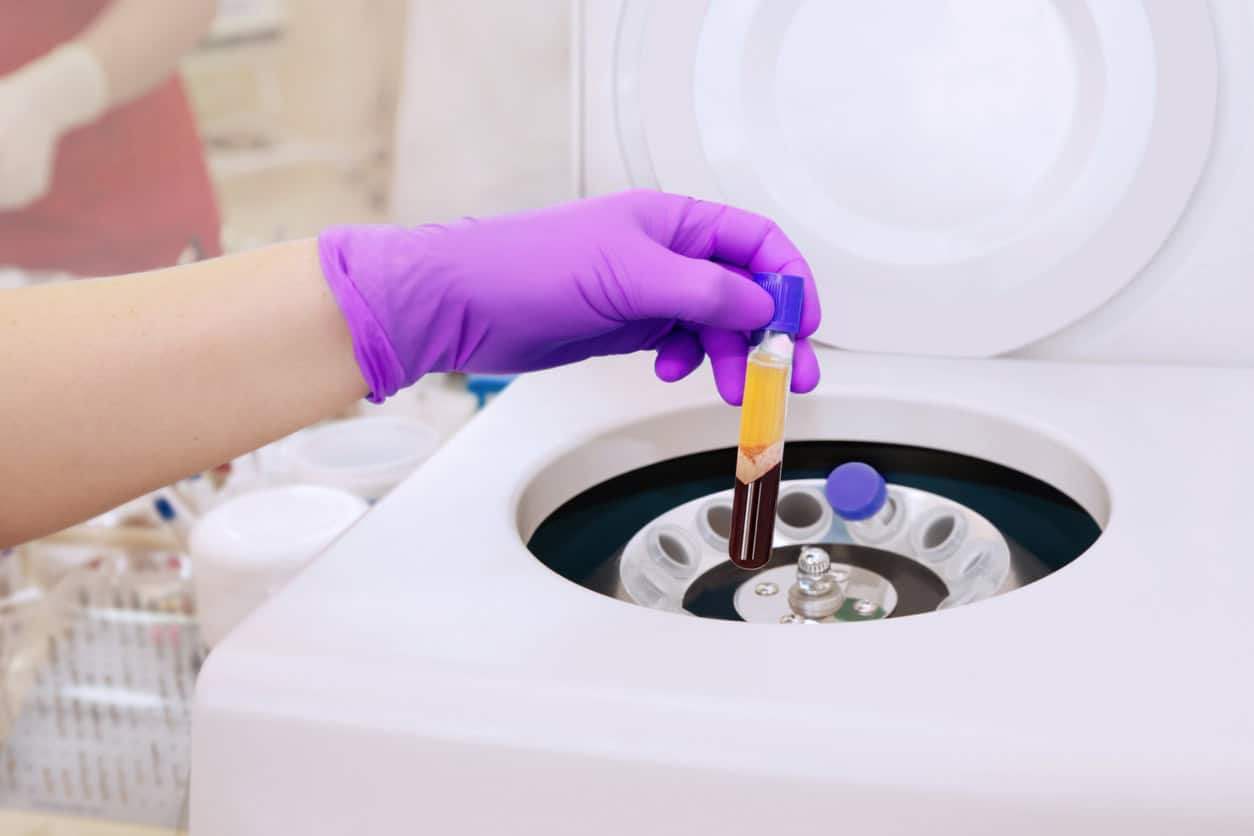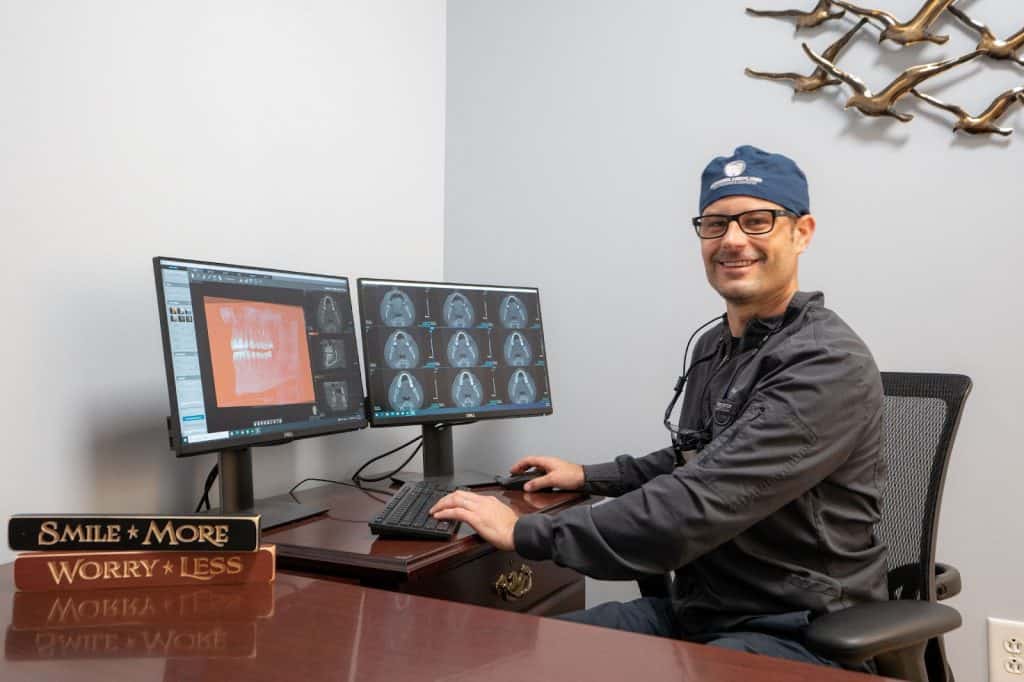Welcome to Our Blog

Benefits of Platelet-Rich Plasma (PRP) Dental Bone Grafting in Cary, NC

Dental bone grafting is a procedure that dental professionals commonly use to repair bone damage caused by injury or disease. One of the techniques used in dental bone grafting is Platelet-Rich Plasma (PRP) Bone Grafting. This new technique has been introduced in dentistry to promote bone healing and regeneration, thus improving the outcomes of the dental bone grafting procedure.
In this post, your #1 Cary, NC dentist discusses what PRP bone grafting is, how dental bone grafting works, and the benefits of PRP dental bone grafting.
What Is Platelet-Rich Plasma (PRP)?
Platelet-rich plasma (PRP) is a concentration of the patient’s blood, which contains a high concentration of platelets. Platelets are the cells that are responsible for blood clotting and tissue repair.
PRP is obtained by centrifuging a sample of the patient’s blood, which separates the platelets from the other blood components. The resulting PRP is a yellowish liquid that is rich in growth factors and cytokines, which are essential for tissue regeneration and repair.
PRP has been used in various medical fields, including dentistry, to enhance healing and promote tissue regeneration. It has gained popularity in dental bone grafting procedures, where it is used as an adjunct to improve bone healing and regeneration.
What is PRP Bone Grafting?
Platelet-Rich Plasma (PRP) bone grafting is a technique that uses the patient’s blood to enhance the bone grafting procedure. The patient’s blood is drawn and processed in a centrifuge to concentrate the platelets and growth factors responsible for promoting new tissue growth. This concentrated PRP is then used to supplement the bone grafting procedure. As a result, the PRP helps to accelerate the healing process and promote the growth of new bone tissue.
A dental bone graft is an oral surgery procedure that involves transplanting bone tissue to the jawbone. This procedure is often used to restore the bone lost due to periodontal disease, injury, or tooth loss before performing a dental implant surgery to replace the missing tooth. During this procedure, your Cary, NC dentist, Dr. Leedy, places a bone substitute or new dental bone grafting material into your jawbone to increase its height or width.
How Does Bone Grafting Work?
The new bone material used in a dental bone graft can come from various sources, such as your own body, a donor, or a synthetic substitute. The type of dental bone graft material used will depend on several factors, including the location and size of the bone defect, your health status, and your dentist’s preference. The bone tissue is placed in the area of your jawbone that requires repair to act as a scaffold for new bone tissue to grow, thus helping to repair the damaged bone.
Dr. Leedy typically performs the bone grafting procedure under local anesthesia and oral sedation to ensure patients’ comfort. After the bone tissue is transplanted, you will need to follow a strict oral hygiene regimen and avoid chewing hard or crunchy foods. Dr. Leedy may also prescribe antibiotics to prevent infection.
PRP bone grafting is used as a supplement to traditional oral bone graft surgery techniques. During this procedure, your dentist mixes the PRP with the dental bone graft material and uses the mixture to fill your jawbone area that requires repair. The PRP helps promote the growth of new bone tissue, which accelerates your healing process and increases the procedure’s effectiveness.
What Are the Benefits of PRP Dental Bone Grafting?
1. Lower Chances of Dry Sockets
A dry socket, also known as alveolar osteitis, is a complication that can occur after tooth extraction. It happens when the blood clot that forms in the socket where the tooth was removed dislodges or dissolves before the socket has had a chance to heal. This can cause exposure of the underlying bone and nerves, leading to intense pain and sometimes infection.
While there is no guarantee that PRP dental bone grafting will eliminate the risk of dry sockets, evidence suggests that it may help reduce the likelihood of this complication. The growth factors in PRP can help to promote healing and reduce inflammation in the socket. This can help to ensure that the blood clot stays in place and reduces the risk of dry sockets.
2. Convenience & Cost Effectiveness
Your dentist can generate PRP during an office visit, even when you’re undergoing an outpatient surgical procedure like dental implant placement. Moreover, since PRP harvesting is done in your dentist’s office with only a small amount of blood, you won’t need to incur the expense of the harvesting procedure at the blood bank or hospital.
3. Safer, Faster Healing
The high concentration of growth factors and cytokines in PRP promotes faster surgical site healing and reduces the recovery time. The growth factors stimulate the migration of stem cells to the site, which enhances tissue regeneration and repair.
PRP is obtained from the patient’s blood, which reduces the risk of rejection, allergic reaction, and transmission of diseases. Moreover, PRP contains high levels of platelets, which are involved in the body’s natural defense mechanisms against infection. The concentrated platelets in PRP help to combat bacteria and promote healing, reducing the risk of complications following the dental bone grafting procedure.
4. Improved Bone Density
Dental bone grafting is a procedure that involves adding bone to the jaw to create a stable foundation for dental implants. PRP is an effective tool to improve the quality of the newly formed bone. The growth factors found in PRP have been shown to increase bone density and promote the formation of new bone tissue. This leads to a more stable foundation for dental implants and reduces the risk of implant failure.
5. Minimally Invasive
PRP dental bone grafting is a minimally invasive procedure. Its minimally invasive approach reduces the risk of complications and allows for faster healing and recovery.
6. Reduced Pain and Discomfort
PRP dental bone grafting can help to reduce pain and discomfort during and after the procedure. The growth factors in PRP promote healing and reduce inflammation, which can help to reduce pain and discomfort.
7. Improved Aesthetics
PRP dental bone grafting can also help to improve the aesthetics of the patient’s smile. When PRP is used as a supplement to bone grafting, it promotes the growth of new bone tissue, which can help improve the jawbone’s shape and contour. This can lead to a more natural-looking and attractive smile.

PRP Dental Bone Grafting in Cary, NC
No doubt, PRP dental bone grafting is an effective procedure for increasing your dental implant surgery’s effectiveness, helping you heal faster, and increasing the amount of bone present.
Here at Nathaniel Leedy, DMD Family, and Cosmetic Dentistry, we offer PRP dental bone grafting in Cary, NC, and treat your overall health with advanced dental services designed to accelerate your healing. Contact us today to find out if PRP is right for you, or schedule an appointment so we can take care of your smile.
